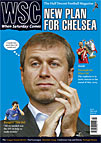 Halifax bounced back into the League once, but a failure to do so again has led to aseemingly terminal decline. Many want to keep football in the town but, writes Peter Brooksbank, they cannot agree how
Halifax bounced back into the League once, but a failure to do so again has led to aseemingly terminal decline. Many want to keep football in the town but, writes Peter Brooksbank, they cannot agree how
Friday May 9, 2008. As the rest of the football world was being ordered by Sky to whip themselves into a frenzy for the final Premier League Sunday of the season, supporters of Conference strugglers Halifax Town spent their day glued to the internet, tapping the refresh button every other minute and glancing nervously at the clock. They weren’t, however, waiting on updates of a play-off game or a Trophy final. In a macabre parody of online minute-by-minute match reports, they were watching the Halifax Courier’s live updates from a meeting organised by administrators Begbies Traynor with the club and their owners, a last-ditch effort to keep Halifax Town alive. And, to the fans’ horror, it was not going at all well.
Halifax, creaking under the burden of massive debt, desperately needed to conclude a Company Voluntary Arrangement to avoid expulsion from the Conference and certain liquidation. The meeting was convened to try to thrash out a compromise, with creditors stubbornly resisting the consortium’s 2.5p-in-the-pound offer. The Conference had set a noon deadline or the club would be expelled.
The prognosis wasn’t good, but after near-misses at Bournemouth, Luton and Rotherham, Halifax fans still had hope. However, as the noon deadline came and went, their mood darkened. It turned to abject despair when news filtered through of an error that had been made calculating the tax debt. It was not, as thought, £500,000 – but actually £814,000. It was a terrible discovery, rendering quibbles about pence in the pound redundant in an instant. Administrator Rob Sadler exited the meeting to announce that Halifax would “probably perish”. “The cleanest way forward is to start from the bottom and build up again debt-free,” he said. And that’s exactly what most people thought would happen.
The supporters’ trust had been working on a Plan B, in case the club failed to reach an arrangement with their creditors. The plan was to create a brand new and wholly supporter-owned phoenix club, in the mould of the successful AFC Telford and Scarborough Athletic. However, what happened next is a pertinent reminder that the concept of fan ownership, even where it serves to rebuild clubs ruined by bungling chairmen, remains a divisive issue.
Contrary to expectations, the Bosomworth group neither placed the club into receivership nor walked away. Instead, as the trust was drafting its statement of intent to form a new club, the consortium decided it wanted to keep the old club alive and re-enter the pyramid itself. Fans were suddenly faced with two entirely separate plans: one under the auspices of the consortium, the other under the Supporters Direct banner.
To confuse matters further, the trust chair and vice-chair, Pam Burton and Roger Bottomley, opted to support the consortium’s vague proposal for reforming the club, leaving their society in the awkward position of proceeding with its Plan B as its leaders were publicly supporting an unrelated scheme. Eventually, Bottomley and Burton resigned, admitting in a joint statement that the vision of a new, fan-owned club was not one they shared. “Certain board members are more than anxious to have the ‘fan-owned’ concept,” they said. “This is a strategy which we feel we cannot either front or put our respective energies into.”
Many fans are still not sure what the consortium’s plans are, specifically how they intend to keep the club alive despite the huge debts. Requests for meetings to find out the answers have met with no response. “We don’t know what the consortium are looking at doing,” sighed a clearly exasperated Gavin Butler of the Halifax trust. “Our requests for a face-to-face meeting to find a way forward have not been met.”
Depressingly, the fans seem to have split into pro-trust and pro-consortium camps, with all the associated mud-slinging, despite the fact that neither was intended to be a rival to the other. The consortium, sensing the split, has offered to walk away, stating, bluntly: “We do not want to be where we are not required.”
A month on, the immediate future of Halifax Town and that of any new club remain unresolved. The consortium remains silent, the trust shattered by resignations and public splits. Deadlines loom as the jumbled jigsaw of the pyramid falls into place. Meanwhile, the unfinished Shay sits silent and empty, waiting for a team. It could be waiting a while.
From WSC 257 July 2008